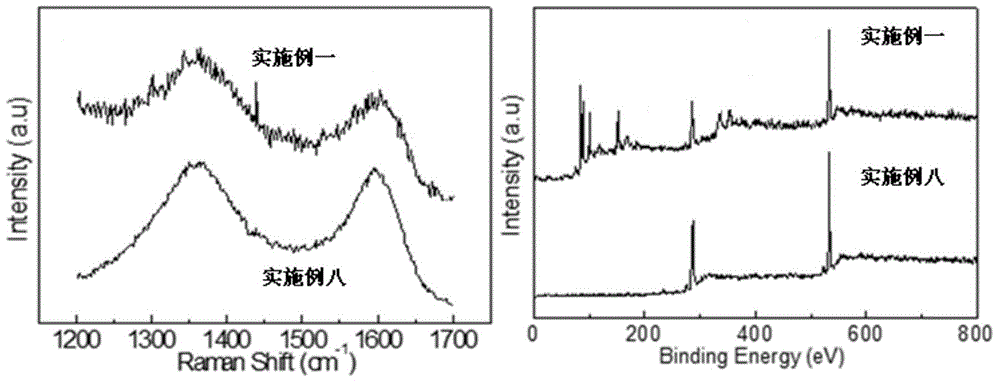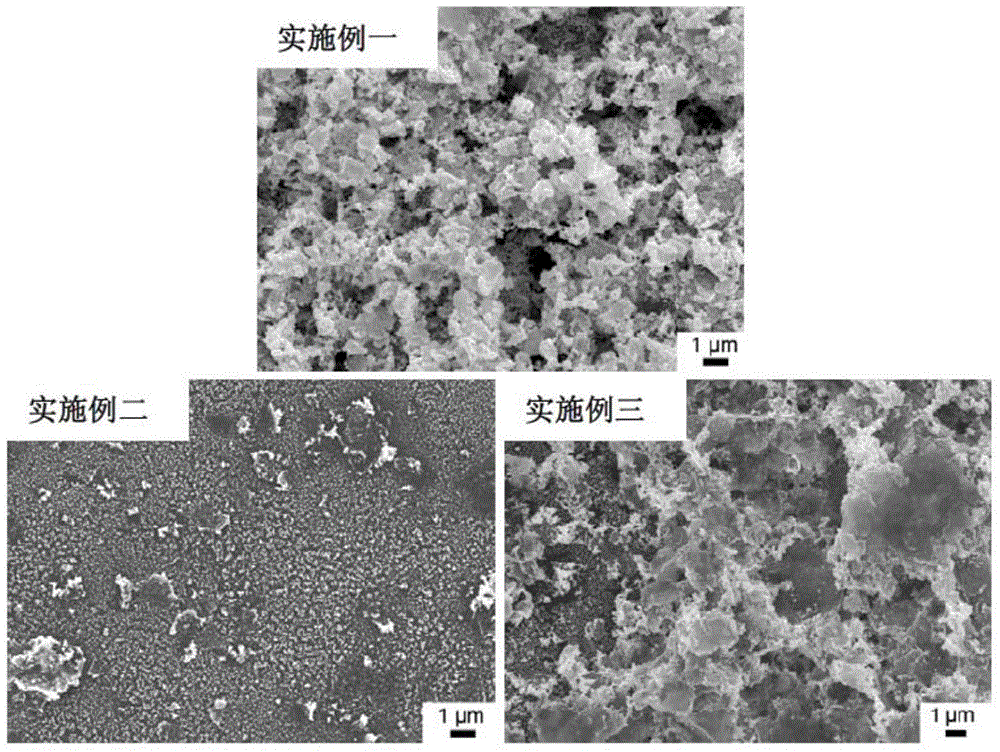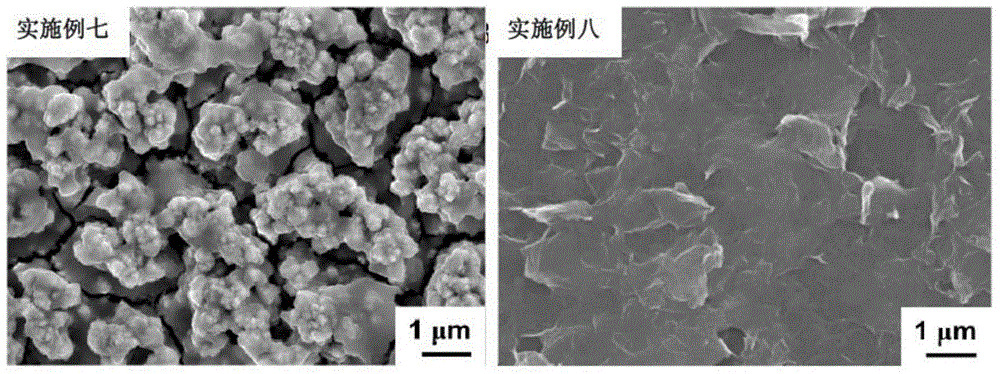Preparation method of gold-graphene composite nanomaterial, and application of composite nanomaterial in glucose detection
A graphene composite and nanomaterial technology, applied in the direction of material electrochemical variables, etc., can solve the problems of nanomaterials that are difficult to control product distribution, morphology and particle size, easy to fall off during storage and use, and poor catalyst adhesion. Effects of catalytic activity and stability, wide detection limit, and structural stability
- Summary
- Abstract
- Description
- Claims
- Application Information
AI Technical Summary
Problems solved by technology
Method used
Image
Examples
preparation example Construction
[0016] The present invention provides a kind of preparation method of gold-graphene composite nano material on the one hand, it comprises the following steps:
[0017] A. Prepare the soluble salt solution of gold, add graphene oxide, and disperse evenly;
[0018] B. Insert the positive electrode and the negative electrode, pass direct current, constant voltage, and obtain the deposited gold-graphene composite nanomaterial on the surface of the negative electrode.
[0019] As an improvement to the present invention, the soluble gold salt solution is tetrachloroauric acid or potassium tetrachloroaurate.
[0020] As an improvement to the present invention, the graphene oxide is secondary graphene oxide. Concrete, the preparation process of described secondary graphene oxide comprises:
[0021] A1. Pre-oxidation: mix concentrated sulfuric acid, K 2 S 2 o 8 ,P 2 o 5 and graphite at 85°C for 8 hours, diluted with water, filtered and washed until the pH of the filtrate was neu...
Embodiment 1
[0034] First, prepare secondary graphene oxide:
[0035] 1. Pre-oxidation: Add 10mL concentrated sulfuric acid and 1g K 2 S 2 o 8 , 1g P 2 o 5 and 1g of graphite powder and stirred vigorously at 85°C for 8 hours, then transferred the reactant to a large beaker, diluted with water, filtered and washed until the filtrate was neutral, and dried in vacuum at 60°C to obtain pre-oxidized graphite.
[0036] 2. Secondary oxidation: add 11.5mL concentrated sulfuric acid to the reagent bottle and bathe in ice for 10 minutes, then add 0.5g pre-oxidized graphite, KMnO 4 1.5g, stirred and reacted for 1 hour in an ice bath; heated to 35°C, reacted for 2 hours; transferred the reactant to a 100mL beaker, added 23mL ultrapure water to continue the reaction for 10 minutes, added 70mL ultrapure water and stirred evenly, then added 1.5 mL 30% H 2 o 2 , stir (the solution turns bright yellow); wash with 500mL 10% HCl suction filtration until the filtrate is neutral; disperse the product ob...
Embodiment 2
[0043] This embodiment is basically the same as Embodiment 1, except that during the preparation of the gold-graphene nanocomposite material, the deposition time is 1 minute by direct current power supply.
[0044] The morphology of the gold-graphene nanocomposite material prepared by the final test, such as figure 2 shown. Through the electrochemical test, the current density of the composite material catalyzing glucose under the detection voltage of 0V vs. (Ag / AgCl) is 46μA / cm 2 ,like Figure 4 shown.
PUM
| Property | Measurement | Unit |
|---|---|---|
| current density | aaaaa | aaaaa |
| current density | aaaaa | aaaaa |
| current density | aaaaa | aaaaa |
Abstract
Description
Claims
Application Information
 Login to View More
Login to View More - Generate Ideas
- Intellectual Property
- Life Sciences
- Materials
- Tech Scout
- Unparalleled Data Quality
- Higher Quality Content
- 60% Fewer Hallucinations
Browse by: Latest US Patents, China's latest patents, Technical Efficacy Thesaurus, Application Domain, Technology Topic, Popular Technical Reports.
© 2025 PatSnap. All rights reserved.Legal|Privacy policy|Modern Slavery Act Transparency Statement|Sitemap|About US| Contact US: help@patsnap.com



